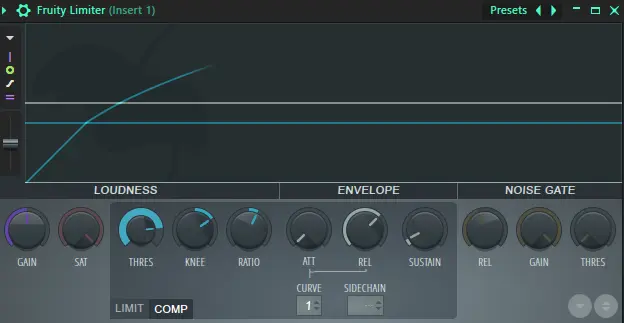
Table of Contents
What is the theory of the music?
Music theory is the study of musical practices and possibilities. Its fundamental purpose is to provide a framework for understanding, composing, and evaluating musical works. Music theory allows artists and aficionados to understand the various structures and ideas that drive musical compositions ranging from classical symphonies to modern pop tunes.
Music theory is important because it provides a systematic approach to the elements that make up music, such as melody, harmony, rhythm, and form. It allows artists to successfully express ideas in both written and performing situations, resulting in a more profound enjoyment and nuanced interpretation of music.

Introduction: Elements of Music Theory
Music theory has seen tremendous evolution throughout history. It originated in ancient civilizations and has been influenced by numerous cultural and philosophical trends over the years. The ancient Greeks, for example, established the groundwork for comprehending musical scales and modes, while the Renaissance witnessed the rise of counterpoint and harmony.
The Baroque era saw the introduction of increasingly complicated shapes and structures, which were perfected further during the Classical and Romantic periods. Jazz, rock, and electronic music emerged in the twentieth century, bringing fresh views and advances to the discipline of music theory.
Music theory is not limited to a particular genre or culture. Its concepts are globally relevant and provide important insights into many musical traditions. Whether studying the complex rhythms of African drumming, the melodic modes of Indian classical music, or the harmonic progressions of Western classical music, music theory gives the skills for understanding and appreciating the diversity of global musical expression.
In essence, music theory serves as a link between the technical components of music and the emotional experience of hearing it. Individuals who learn music theory can improve their musical ability, increase their enjoyment for various musical styles, and get a better knowledge of the global language of music.
Pitch and Notation
Pitch is a fundamental concept in music theory that refers to the perceived frequency of a sound. It allows us to discriminate between various notes and melodies. The pitch of a note is determined by its frequency, which is measured in Hertz (Hz). Higher frequencies correlate to higher pitches, while lower frequencies correspond to lower pitches. Understanding pitch is essential for musicians because it lays the foundation for melody and harmony.
Musical notation is a way for graphically representing pitch and rhythm. The staff is fundamental to this arrangement, consisting of five horizontal lines and four gaps, each signifying a particular pitch. The placement of a note on the staff indicates its pitch. Clefs are symbols that appear at the beginning of the staff to indicate the pitch range of the notes.

Treble and bass clefs are the most often used clefs. The treble clef, sometimes called the G clef, is used for higher-pitched notes, whereas the bass clef, or F clef, is used for lower-pitched sounds.
Notes are symbols that represent the duration and pitch of a sound. They come in a variety of forms that indicate the amount of time they should be kept. The whole note, represented by an open oval, is the longest, followed by the half note, quarter note, eighth note, and sixteenth note, which are all increasingly shorter in duration. When reading sheet music, musicians interpret the notes in conjunction with the staff and clefs to get the correct pitch and rhythm.
In written music, pitch is expressed by the note’s vertical location on the staff. The pitch increases when the note is put higher. Learning to read basic sheet music entails identifying the various notes and their placements on the staff, as well as learning the clefs and note values. This talent is vital for everyone who wants to play or produce music since it offers the foundation for musical expression.
Scales and Modes
Scales and modes are essential components of music theory, acting as the foundation for melodies and harmonies. A scale is a set of notes in a precise order, usually within one octave, that serve as a framework for musical composition. The most frequent scales include major and minor scales, pentatonic scales, and chromatic scales.
The major scale, defined by a certain sequence of whole and half steps, produces a sound that is sometimes described as cheerful or bright. In contrast, the minor scale, which likewise follows a specific pattern of whole and half steps, conveys a more dismal or melancholic tone.
The pentatonic scale, which consists of five notes, is used in a variety of musical genres due to its adaptability and generally attractive tone. The chromatic scale, which includes all twelve notes within an octave, offers a diverse range of tones for crafting elaborate and complicated melodies.
Modes are variations on scales that provide distinct tonal characteristics and moods. Western music theory recognizes seven main modes: Ionian, Dorian, Phrygian, Lydian, Mixolydian, Aeolian, and Locrian. Each mode is based on the major scale but begins on a different note, resulting in unique interval patterns and aural qualities.
The Ionian mode, which is essentially the major scale, is recognized for its bright and solid tone. The Dorian mode, which begins on the second degree of the major scale, has a minor character but a little jazzy feel due to its elevated sixth. Phrygian mode, which begins on the third degree, has a minor tonality with a distinctive lowered second that lends a Spanish or Eastern taste.
The Lydian mode, which begins on the fourth degree, is comparable to the major scale but has a raised fourth, giving it a dreamy, almost ethereal feel. Mixolydian mode, based on the fifth degree, has a major tonality with a lowered seventh, and is commonly seen in blues and rock music.
The Aeolian mode is similar to the natural minor scale, whereas the Locrian mode, which begins at the seventh degree, is the least stable and has a reduced sense due to its lower second and fifth.
To properly comprehend and use scales and modes, it is helpful to practice generating them. Begin by establishing a major scale, then proceed to determine the modes by starting at various scale degrees. For example, begin the C major scale (C, D, E, F, G, A, B) on D to create the Dorian mode. Regular practice and experimenting will help you gain a better understanding of these musical components and their applications in composition and performance.
Intervals and Chords
Intervals are the fundamental building blocks of music theory; they describe the space between two pitches. Intervals are called from their size and quality, whether measured in half or whole steps. A major third, for example, is made up of four half steps, but a perfect fifth has seven. Understanding intervals is critical because they not only describe the connection between sounds but also allow for the development of chords.
Chords are basically a series of intervals piled in a harmonic order. The simplest form is a triad, which consists of three notes: the root, third, and fifth. Depending on the intervals employed, these triads can be major, minor, diminished, or enhanced. A major chord, for example, is made up of a major third and a perfect fifth, whereas a minor chord has a minor third and a perfect fifth. A decreased chord has a minor third and a diminished fifth, whereas an augmented chord contains a major third and an augmented fifth.
Chords can also be flipped simply rearranging the notes. Inversions change the bottom note while preserving the chord’s identity, resulting in various harmonic textures. For example, in the first inversion of a C major chord (C-E-G), the bass note is E (E-G-C), but in the second inversion, the bottom note is G (G-C-E).
The significance of chords inside a key cannot be emphasized. Chords produce progressions within a key that express a variety of emotional effects. A popular chord progression in the key of C major may be C-G-Am-F. This I-V-vi-IV progression is commonly employed in popular music because of its attractive and familiar tone. In contrast, a progression like Dm-G-C-F in the key of C major provides a distinct emotional palette, frequently creating a sense of resolve and wholeness.
Overall, the interaction of intervals and chords is the core of harmony in music. By mastering these aspects, musicians may create complex and emotionally charged pieces.
Harmony and Harmonic Analysis
Harmony, a fundamental component of music theory, is the simultaneous use of several musical notes to form chords and chord progressions. This principle is vital for producing the rich, layered soundscapes that distinguish different musical genres. Harmony is fundamentally defined by the ideas of consonance and discord. Consonance refers to note combinations that sound pleasant and stable, whereas discord refers to note combinations that cause tension and a sense of instability, frequently necessitating resolution.
Diatonic harmony is built on the notes of a certain major or minor scale. This form of harmony is common in Western music and serves as a foundation for producing consistent and unified chord progressions. For example, in the key of C major, diatonic chords include C major, D minor, E minor, F major, G major, A minor, and B diminished. Many classical and popular works are built around these chords, which allow for seamless transitions and harmonic coherence.
Chromatic harmony, on the other hand, adds notes outside of the prescribed scale, giving the music more depth and color. This method allows for more experimental and unpredictable harmonic progressions. Chromatic harmony is frequently utilized in classical works to elicit certain emotions or to increase the expressive quality of the music. Composers such as Franz Liszt and Richard Wagner are known for their inventive use of chromaticism, which pushes the bounds of standard harmonic systems.
Harmonic analysis is an important technique for analyzing and comprehending the structure of music. By investigating the chords and their interactions within a piece, musicians and theorists can discover the underlying structure that defines the composition. For example, harmonic analysis of Johann Sebastian Bach’s chorales exposes the subtle interaction of diatonic and chromatic harmonies, demonstrating the composer’s mastery of the trade. Similarly, in popular music, harmonic analysis may reveal chord progressions that add to a song’s catchiness and emotional effect, as evidenced in the works of The Beatles and Elton John.
Melody and Counterpoint
Melody, a fundamental concept in music theory, is a series of notes perceived as a single thing. It is built with scales (ordered sequences of pitches) and intervals (distances between these pitches). Scales offer the structure for melodies, while intervals give them their distinctive character and emotional quality. A melody’s contour, phrasing, and themes must all be carefully considered while creating it.
Melodic contour describes the general form of the melody as it rises and falls in pitch. This contour may produce a variety of expressive effects, including tension and release, movement, and stillness. Phrasing in melody is similar to punctuation in English; it entails breaking down the melody into smaller, more digestible portions, frequently generating a feeling of beginning, middle, and finish within each phrase. Motifs, on the other hand, are small, repeated musical ideas that serve as the foundation for bigger melodic frameworks. These themes can add cohesiveness and thematic unity to a piece of music.
Counterpoint, or the skill of joining separate melodies to generate polyphony, is an important concept in music theory. Contrary to harmony, which focuses on the vertical stacking of notes, counterpoint stresses the horizontal interplay of separate melodic lines. This approach stretches back to the medieval and Renaissance periods, with renowned composers like Palestrina and Josquin des Prez. Counterpoint matured throughout the Baroque era, as illustrated by Johann Sebastian Bach’s fugues and innovations, which are still considered pinnacles of the genre.
Counterpoint has evolved throughout time to accommodate the stylistic shifts of many musical periods. Counterpoint, for example, was placed into the larger framework of homophonic textures throughout the Classical period by composers like as Mozart and Beethoven. Counterpoint was employed by Romantic artists like Brahms and Wagner to bring depth and intricacy to their harmonic language. Counterpoint is still an important tool for composers in today’s music, combining old approaches with new developments.
Form and Structure in Music
Form and structure are key components in music composition, providing the foundation for a piece’s narrative and emotional journey. In essence, the form of a musical composition relates to its general arrangement, which serves as a blueprint for how other portions are organized and developed. Several traditional forms have emerged throughout the years, each with its own distinct traits and emotional impact.
One of the most basic forms is the binary form, which is made up of two different portions (A and B). Each part can be repeated, resulting in an AB or AABB structure. This form is featured in several Baroque dances, including the minuet and allemande. In contrast, the ternary form divides this structure into three sections (ABA), with the original portion returning after a contrastive middle section. This style is frequently used in da capo arias and numerous piano works by artists such as Chopin and Brahms.
The sonata-allegro form, which was popular throughout the Classical period, is more difficult. It is divided into three sections: exposition, which presents the primary topics; development, which transforms these themes; and recapitulation, which returns the original themes, frequently with minor changes. This form is commonly seen in the initial movements of symphonies and sonatas by composers such as Mozart and Beethoven.
Rondo form is distinguished by the repetition of a main theme (A) that alternates with contrasting episodes (B, C, etc.), resulting in structures like as ABACA or ABACABA. This design conveys a sense of familiarity and recurrence, resulting in an appealing cyclical pattern. Rondo form is common in the finales of Classical symphonies and concertos, as seen by Beethoven’s “Rondo a Capriccio,” Op. 129.
In contrast, through-composed form eliminates repeated portions in favor of continuous, non-repetitive growth. This structure is commonly utilized in art songs and contemporary music to preserve narrative flow in the absence of repeating content. Schubert’s “Erlkönig” is a perfect illustration of how the structure aids the story’s development and emotional depth.
These shapes and structures are essential to how music communicates its message, directing listeners through a careful balance of repetition and contrast. Whether in ancient masterpieces or modern works, the careful use of form and structure enhances the musical experience, giving each piece a unique trip.
Check out this blog related to this blog
Check our featured blog
What are The 7 Musical Notes?




Leave a Reply